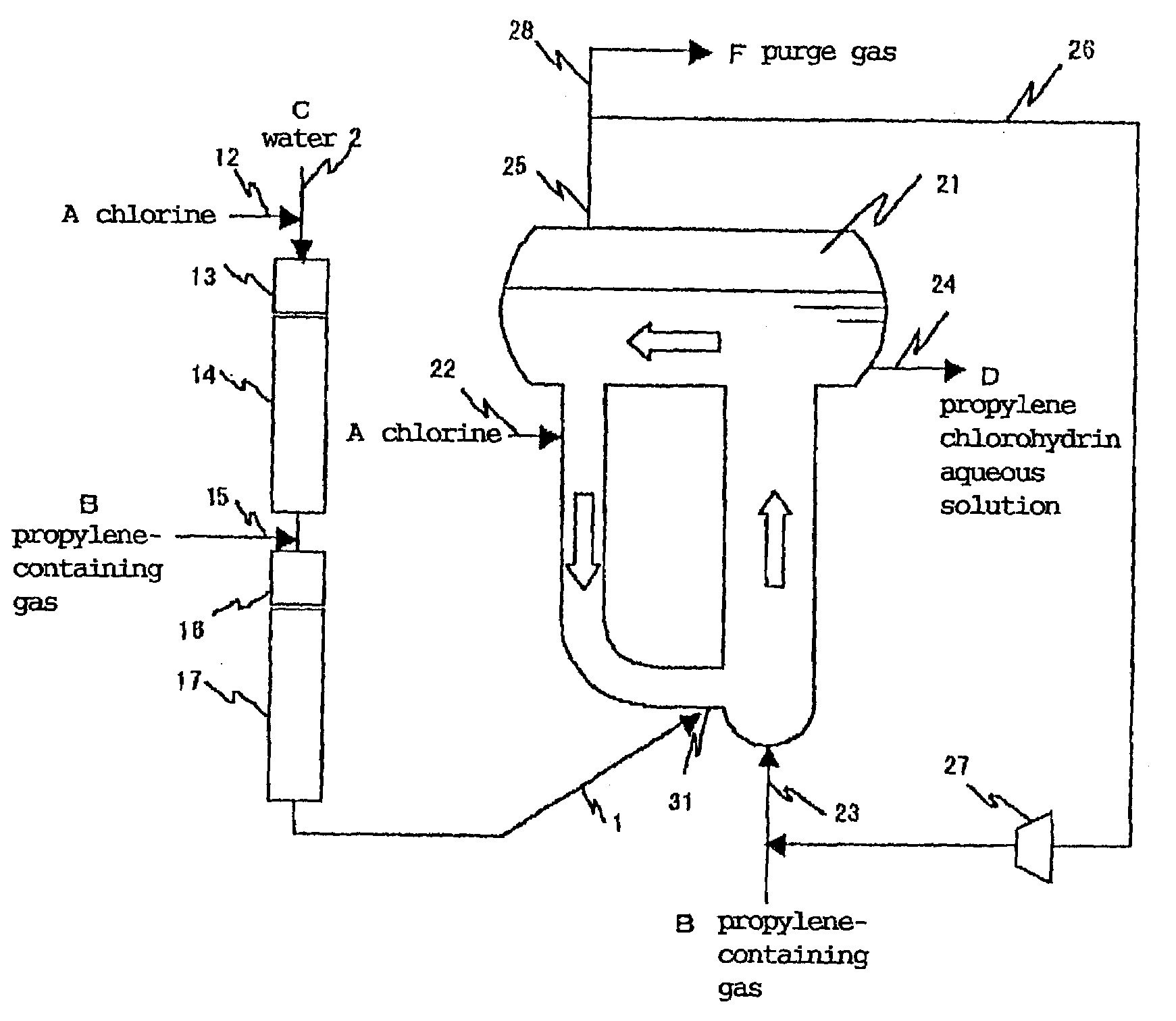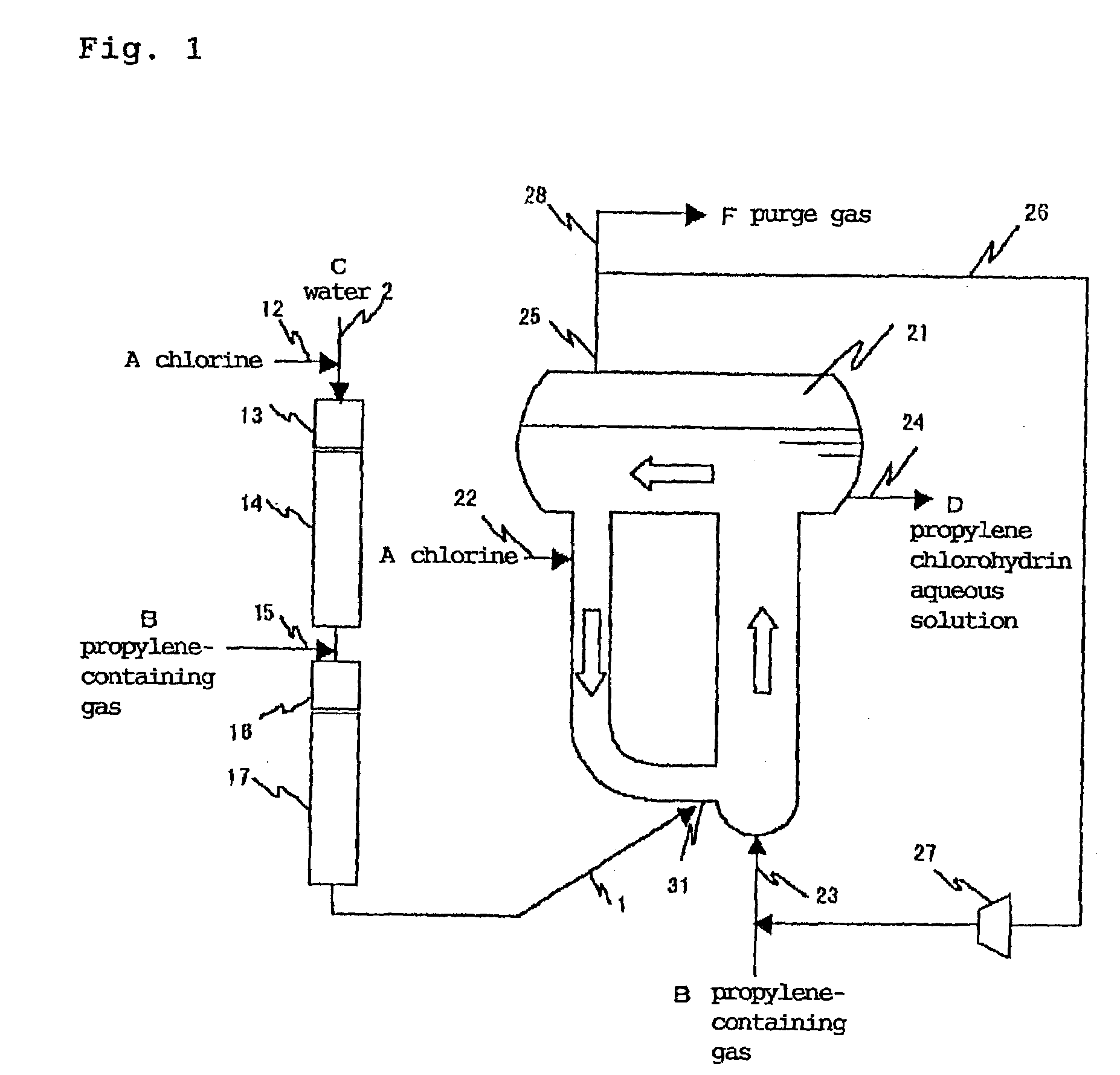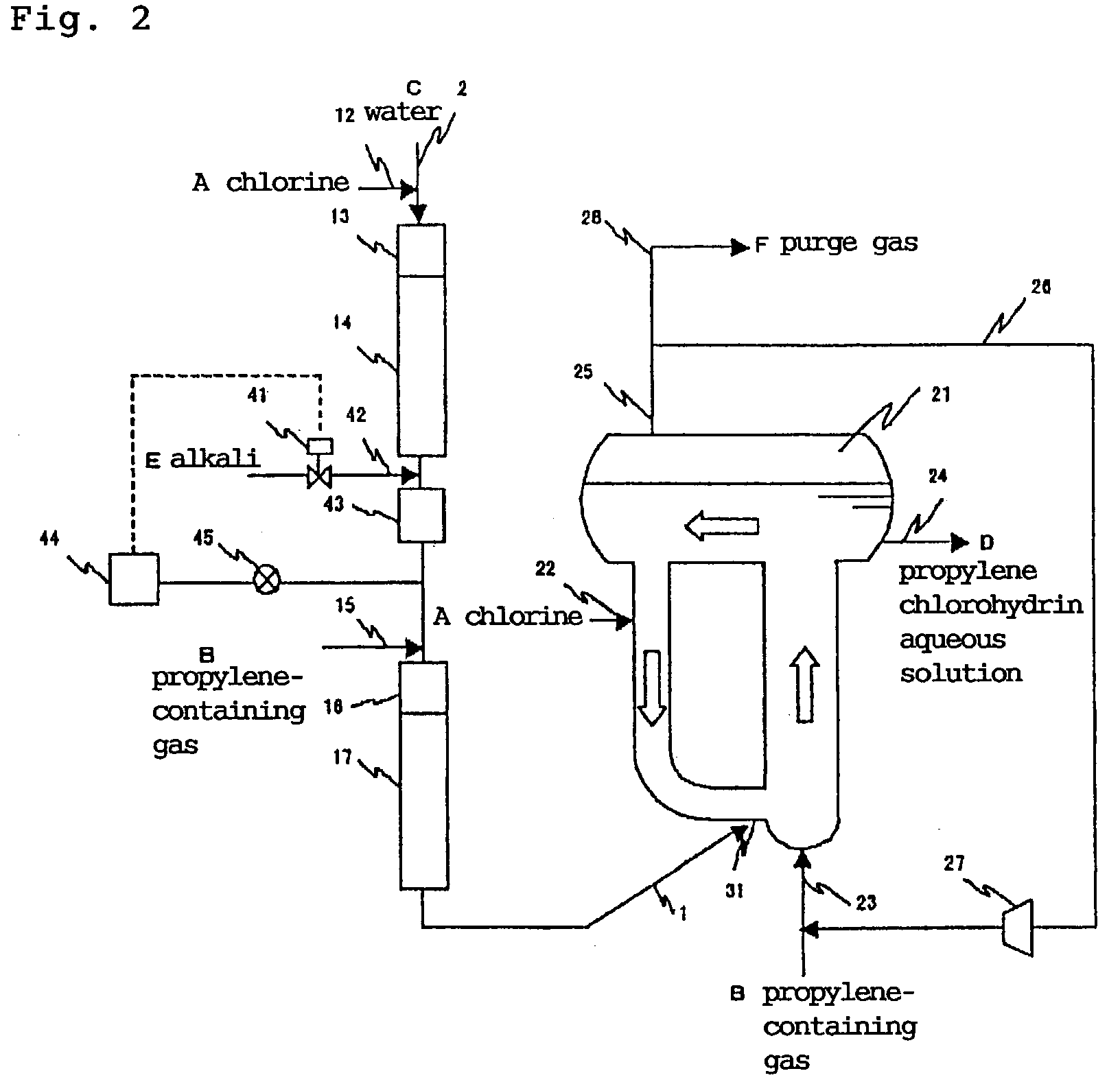Process for producing propylene chlorohydrin
a technology of propylene chlorohydrin and process water, which is applied in the field of process for producing propylene chlorohydrin, can solve the problems of increased cost and difficulty in industrial payment, and achieve the effects of reducing the amount of process water, high selectivity of objects, and high selectivity
- Summary
- Abstract
- Description
- Claims
- Application Information
AI Technical Summary
Benefits of technology
Problems solved by technology
Method used
Image
Examples
example 1
[0099]The apparatus shown in FIG. 1 was used. That is, a tubular reactor having an inner diameter of 27.6 mm and a pipe length of 20 m after mixing a propylene-containing gas and provided with a chlorine supply port, a propylene-containing gas supply port and a cup collision board type mixer shown in FIG. 1 of JP-A 9-29977 for mixing chlorine with a propylene-containing gas was used as a tubular reactor having a one-way flow reaction area of a first stage. A composite reactor which was an annular reactor having an expanded upper portion as a gas-liquid separation area, an upstream area inner diameter of 500 mm, a height of 5 m, a downstream area inner diameter of 300 mm and a height of 5 m was installed at the end of a downstream of the above reactor as a circulating flow reactor of a second stage in order to merge the reaction mixture fluid supplied to the circulating flow reaction area from the one-way flow reaction area with a fluid running in the circulating flow reaction area a...
examples 2 to 3
[0104]The procedure of Example 1 was repeated except that the content and supply rates of chlorine and the propylene-containing gas were changed as shown in Table 1. The results are shown in Table 1.
examples 4 to 6
[0105]The procedure of Example 1 was repeated except that 17% of milk of lime as an alkali was supplied from the alkali supply port to the apparatus shown in FIG. 2, that is, an apparatus having a unit for adjusting pH of the aqueous solution of chlorine by adding an alkali at a downstream of the chlorine supply port in the tubular reactor area to control pH to 4 in order to carry out a chlorohydrination reaction under conditions shown in Table 1. The results are shown in Table 1.
PUM
| Property | Measurement | Unit |
|---|---|---|
| acute angle | aaaaa | aaaaa |
| residence time | aaaaa | aaaaa |
| residence time | aaaaa | aaaaa |
Abstract
Description
Claims
Application Information
 Login to View More
Login to View More - R&D
- Intellectual Property
- Life Sciences
- Materials
- Tech Scout
- Unparalleled Data Quality
- Higher Quality Content
- 60% Fewer Hallucinations
Browse by: Latest US Patents, China's latest patents, Technical Efficacy Thesaurus, Application Domain, Technology Topic, Popular Technical Reports.
© 2025 PatSnap. All rights reserved.Legal|Privacy policy|Modern Slavery Act Transparency Statement|Sitemap|About US| Contact US: help@patsnap.com



